You may have searched the library’s new search interface, UC Library Search (now at one year post-launch!), and gotten a result for an item at NRLF, the Northern Regional Library Facility. It’s one of two cooperative storage facilities for the University of California, the other being SRLF, and when you consider that the University of California’s collection is the largest of research universities in the USA, you can understand why storage is a big deal. As a librarian, I’ve always sort of taken NRLF for granted, and certainly had never seen it—until this month, when I was lucky enough, with colleagues from the Social Sciences Division and the Interlibrary Loan department, to take a tour (spoiler alert—don’t miss the video at the end of this post!!!!).
This involved a trek to the Richmond Field Station, where the NRLF sits at the intersection of Meade and S. 47th Streets, just under 8 miles NW of Doe Library on the main campus. While unassuming from the outside, the NRLF complex, which manages physical access to and metadata for items deposited primarily by libraries at the UC’s northern campuses (UC Berkeley, UC Davis, UC Merced, UC San Francisco and UC Santa Cruz), currently holds more than 7.5 million items. The logistical challenges and scale are momentous, and the fact that it is all beautifully organized and our tour hosts were calm and welcoming is miraculous to me (hence the title of this post). Take for example the banner below—3 million items are all in a day’s work for the staff at the NRLF!! (I exaggerate, but not much).

The complex has been constructed in phases, with storage areas corresponding to each. Below is a picture of the Phase 1 area—when I walked into it, I got a hit of the vastness of space that you get in that very last scene of Raiders of the Lost Ark, where the ark is being wheeled into the massive storage area in some government building somewhere (see the picture here– apparently I’m not the only one with this image burned into my brain). In the NRLF’s case, the shelves are all filled with books and other library items, with the difference from the random packing of the movie image being that they are barcoded by location for retrieval, to avoid loss and mis-shelving (as with any large library, if you misplace an item, it may stay lost for a long time). In the NRLF’s Phase 1 picture below, you are seeing just the lowest of four levels going up to the roof. Also note that the spaces are climate controlled, so as better to preserve the items. Any items sent for storage which are not in good condition may be regretfully rejected, since conditions like mold in a book can be detrimental to items nearby. Also notice here the rolling library stairs on steroids that are used to retrieve items from higher shelves (I’ll come back to these below).
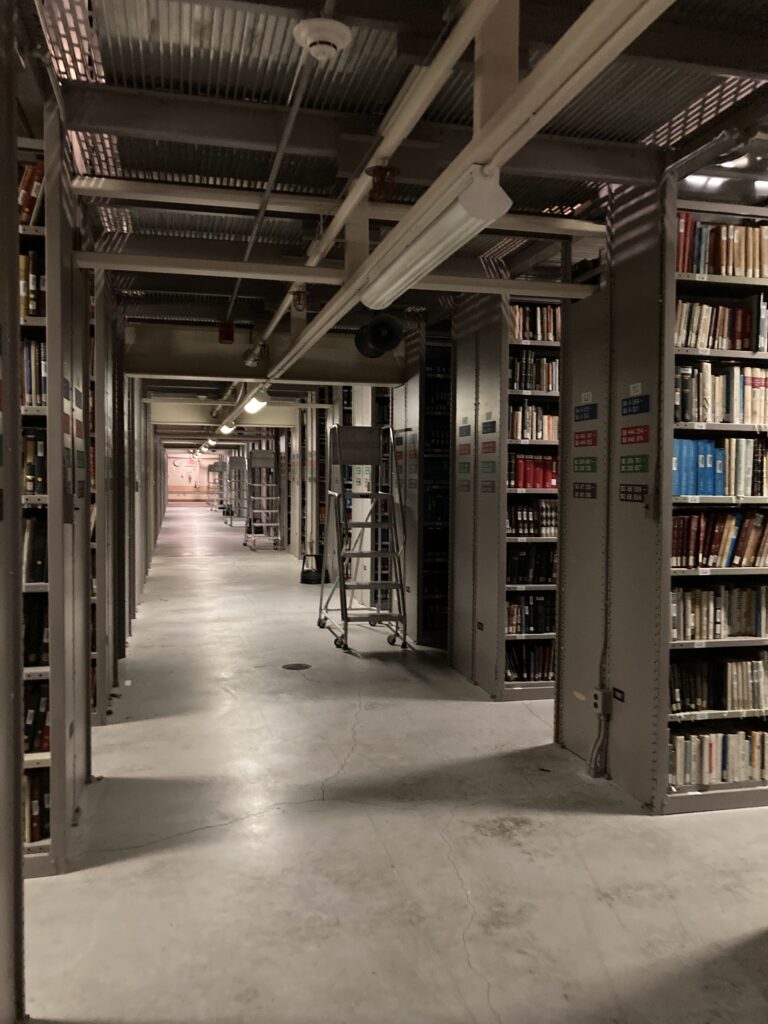
Once I’d gotten my head around the sheer vastness of the spaces and the amazing logistical innovations for managing the spaces and the items (visualize iPads with specialized software, taking into account Wifi availability, staff availability and training, and more), my next impression was just – carts, carts, CARTS! So many carts! Each had a planned purpose and location, highlighting the amount of care and work it takes just to process items being accepted for storage—you aren’t just throwing them onto shelves as you might in your own attic. And, in the picture immediately below, you can see that the items aren’t coming in neatly organized by subject, nor are they eventually shelved that way. Thanks to barcoding technology and software for using it, it’s the location of the item that matters for retrieval, so it’s fine to shelve the book Cancer Detection and Prevention two books away from Glassmaking in Renaissance Venice, as long as you can find each when requested by a library user. This is the difference between browsing a collection organized by subject, and trying to store and retrieve so many disparate items coming at you in random order.
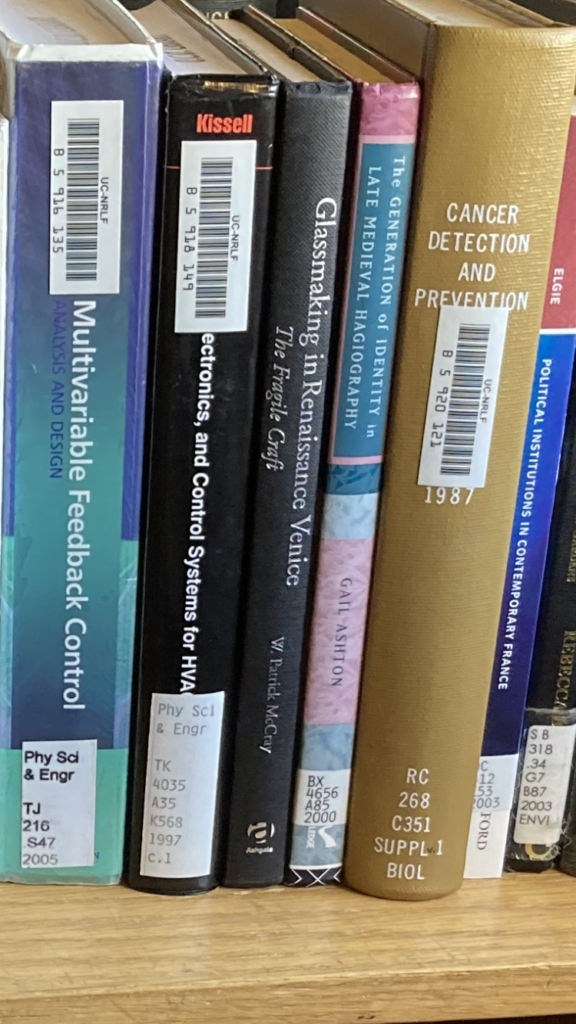
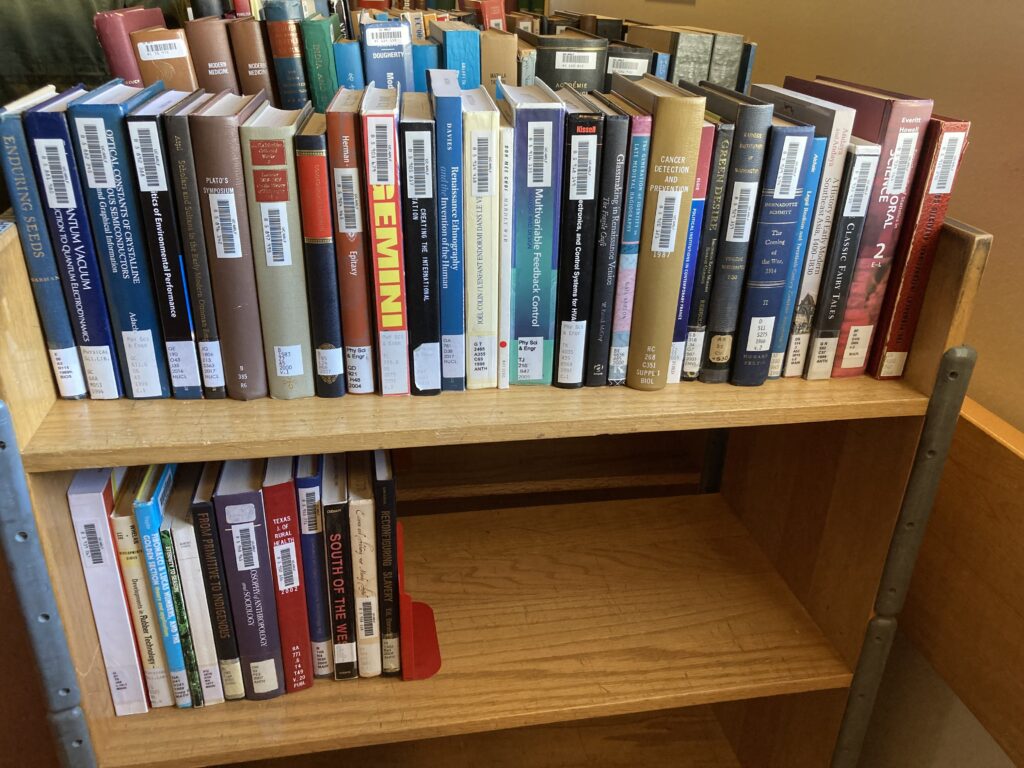
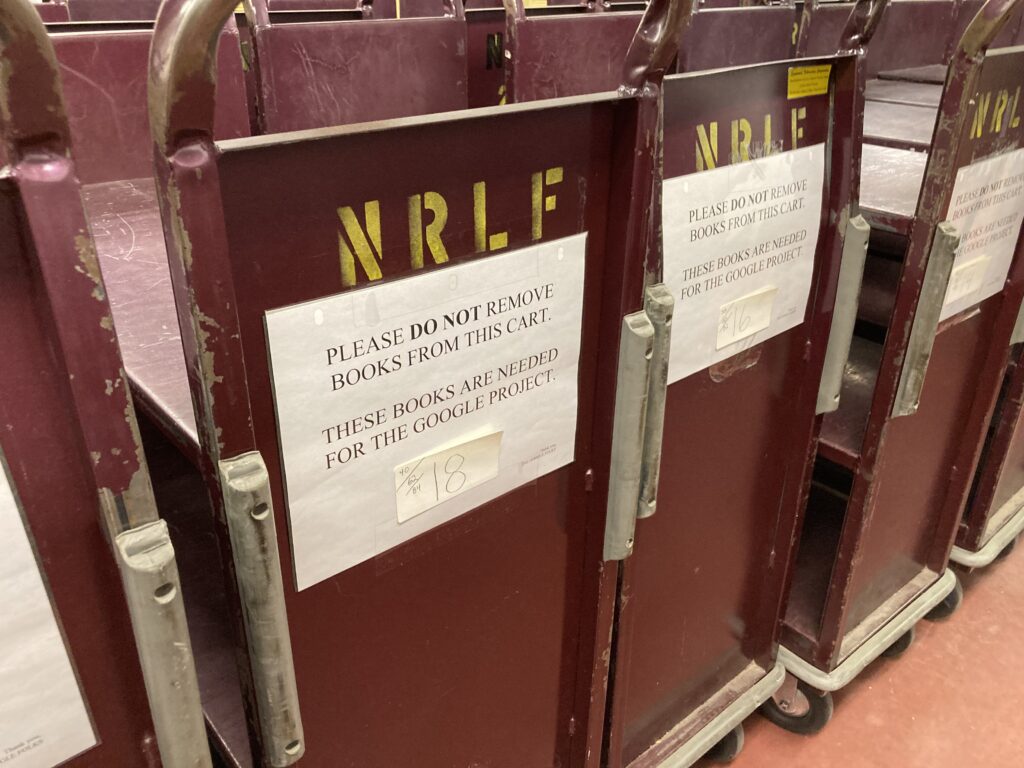
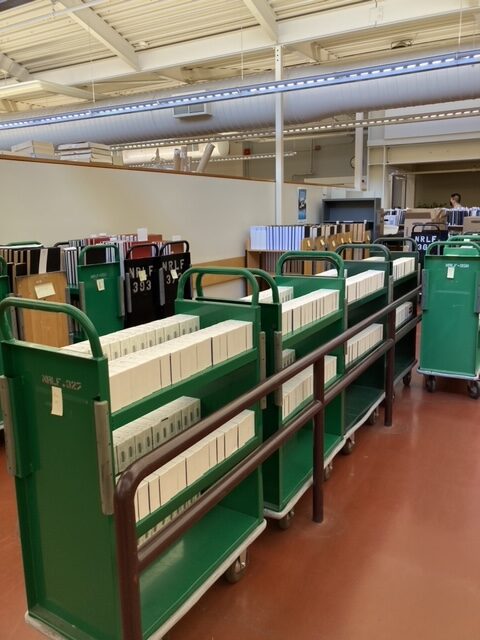
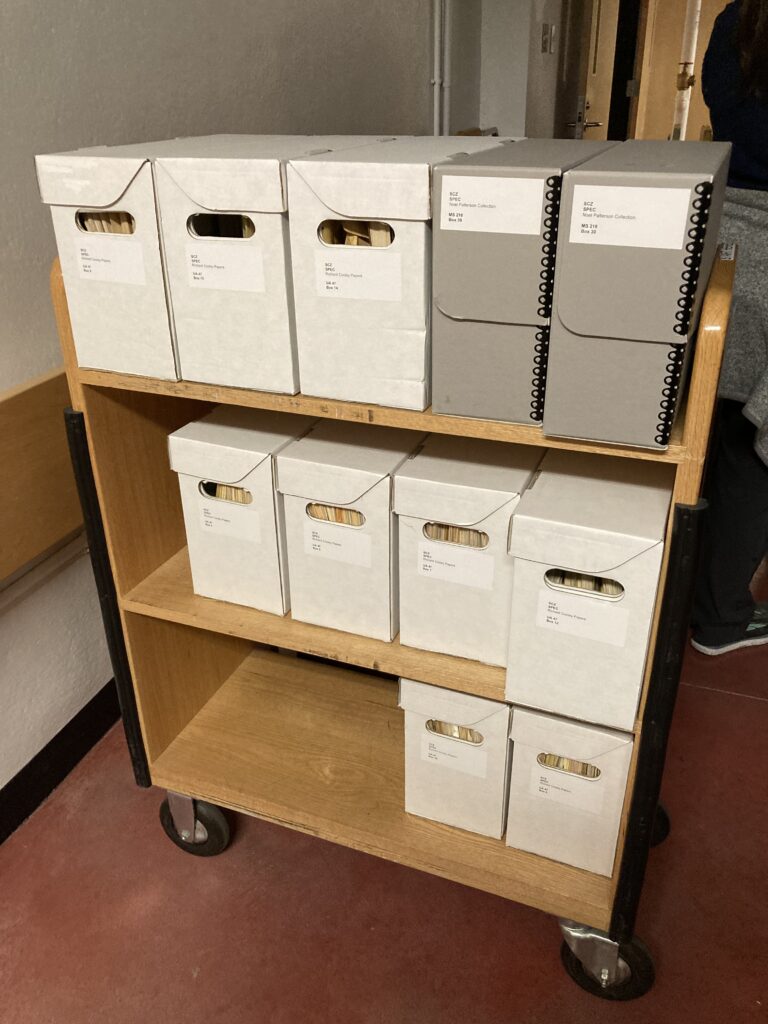
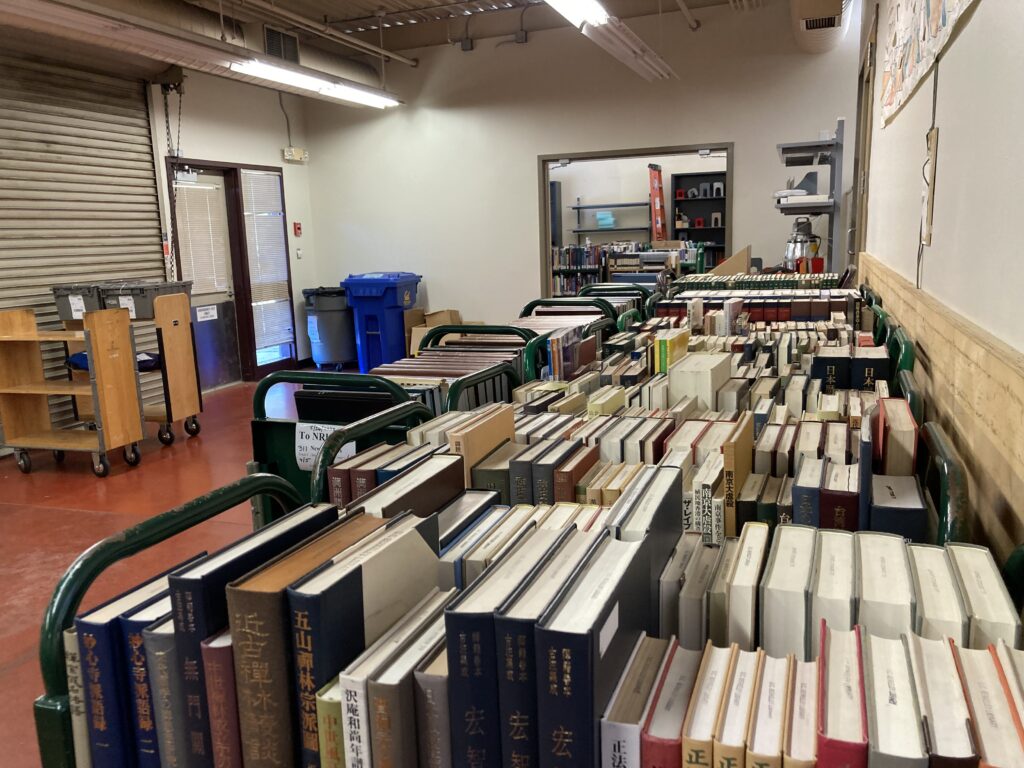
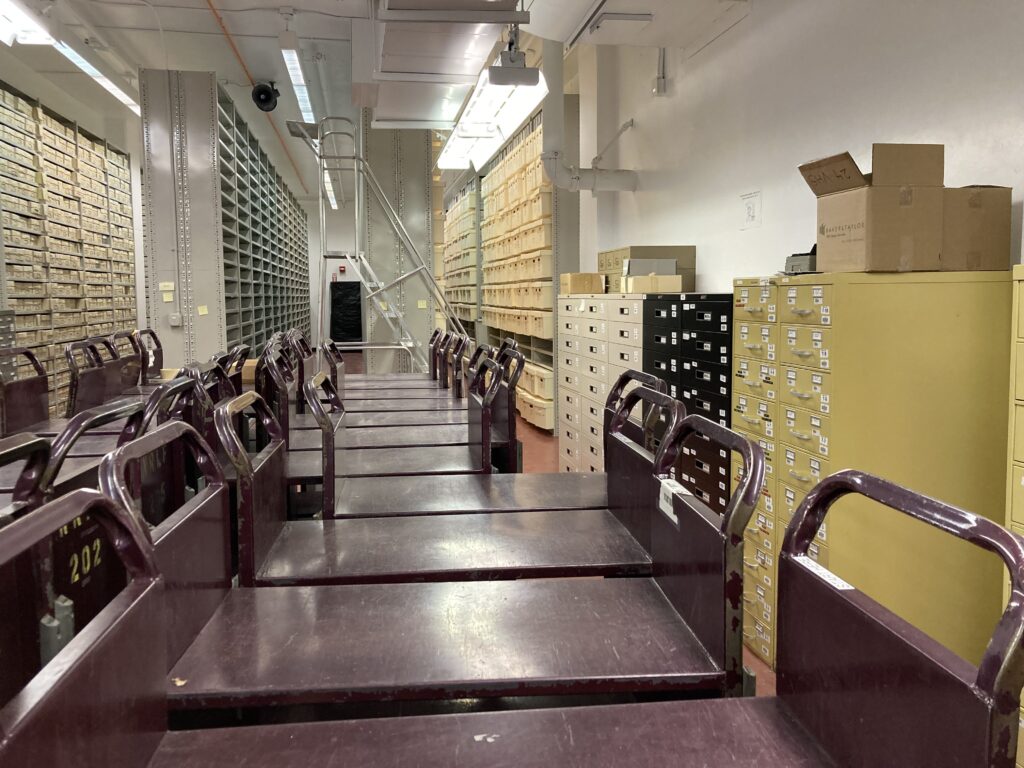
In the picture immediately above, in addition to having carts (natch), notice the varying types of cabinets. This is because while we mostly think about storing books, NRLF actually holds a wide range of item types, including, besides books and journals. “microfilm, maps, audio discs, manuscripts, archives, and other materials”. Here we see the Microforms Room, which holds stored ranges of microfiche and microfilms (at UC Berkeley, a great place to see what these formats look like up close and personal will be when the Newspapers and Microforms Library reopens after its construction-related closure).
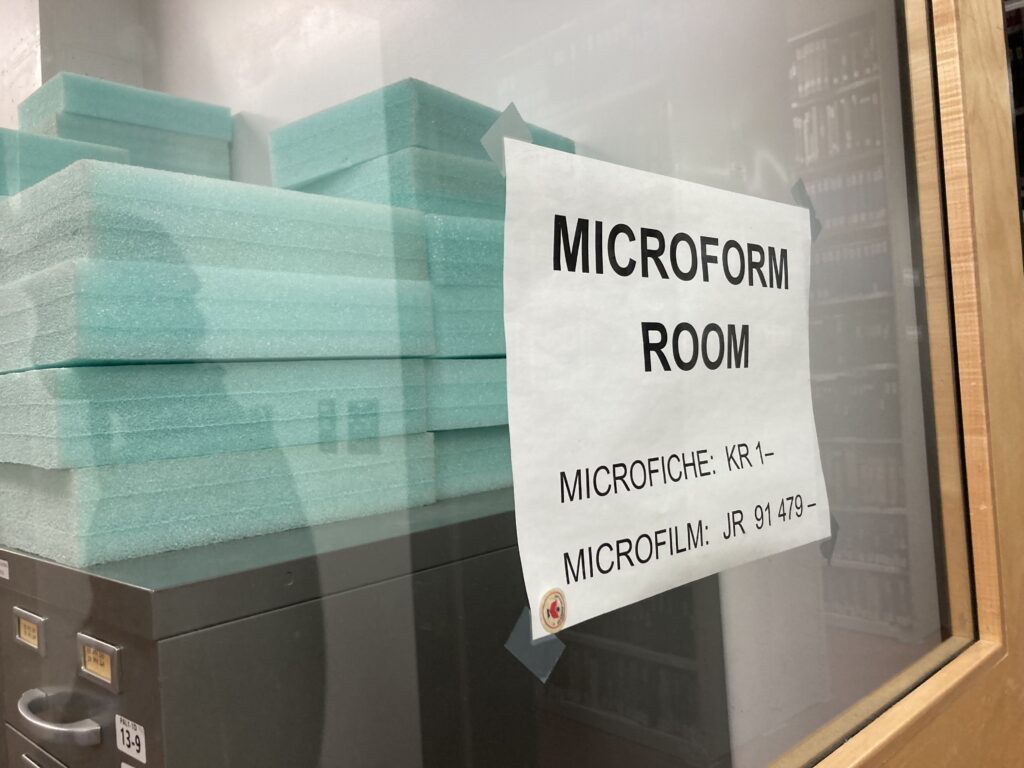
The final stop of the tour was to the Phase 4 building, which will be able to hold 2.5 million items itself, and is in the early stages of being populated with items. It should be able to accommodate storage for the UC system for the next several years, but no worries since the location of the Phase 5 storage area is right nearby for when it’s needed! The pictures below show the large open working space (for now—but surely it will fill up too), and also a diagram for measuring item size so that the space used by the container boxes for the items is maximized (again, this is why it’s great to be able to shelve by location and not subject—you can put all the similar sized items together in a box without worrying that a similarly-themed title is twice the size of the largest book already in that box).
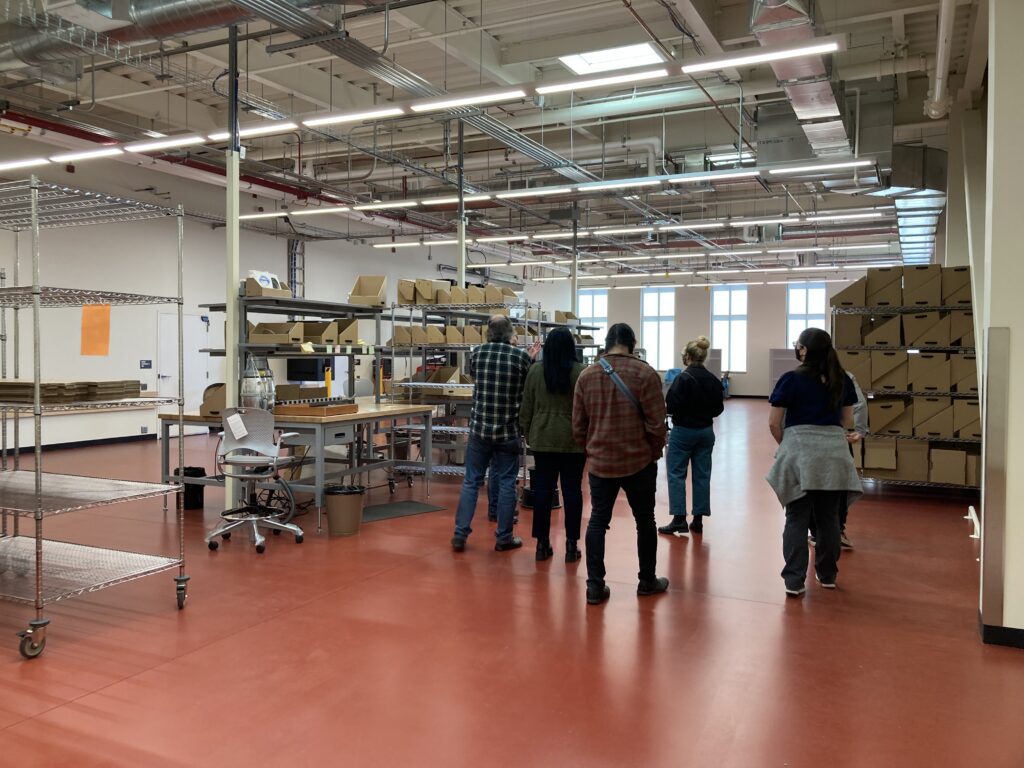
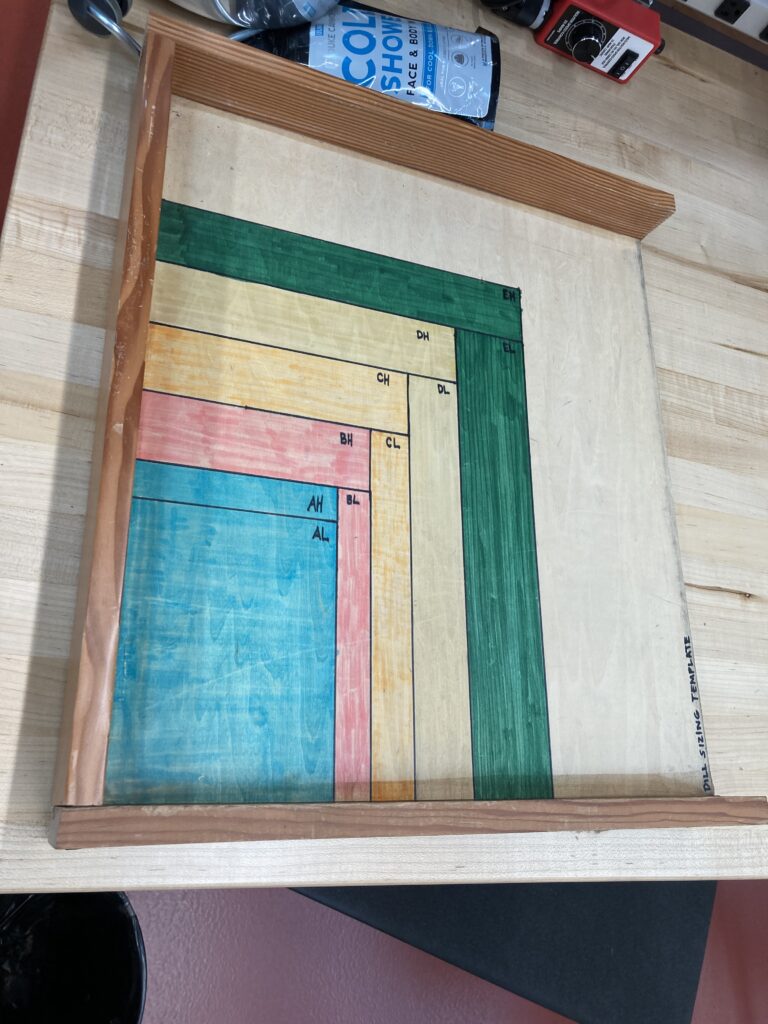
The absolutely most cool part of the tour by far was seeing the machinery that is used for retrieval of items. Remember the picture above from Phase 1, with the library stairs on steroids? This new machinery is not your grandmother’s library stairs—it is next level high tech! In fact, it needs training and certification to be able to use it at all. In the picture below you can see the Phase 4 shelving, and the machine that navigates it for retrieval of items. The machine even has forks at the bottom (similar to those on a forklift) that can carry an entire cart along with it, using the specially made carts with insert points (circled), shown in the second picture below.
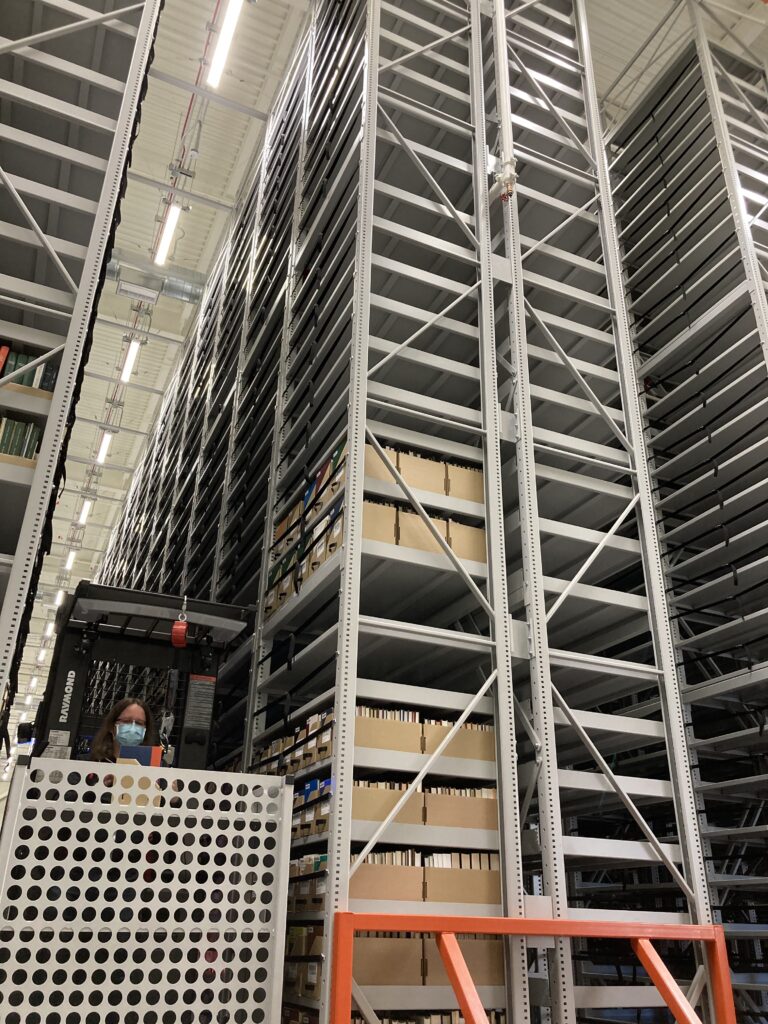
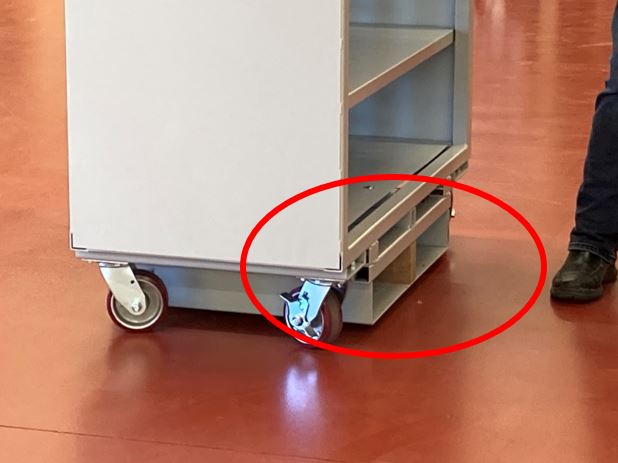
But, actually, this process needs to be seen to be believed! So, here, for your viewing enjoyment, is the video mentioned at the beginning of this post!
As a parting note, the below picture is of an internal exit point from the building. Everyone on the tour (remember that library folks do tend to have some—or a lot—of geek in them) enjoyed the fact that the black stripes on the side of the Phase 4 building represent bar codes used for actual titles in the collection! Our wonderful hosts sent us a list of the titles after the tour, writing:
“Below are the titles whose ISBN barcodes were selected by the SLFB as metal siding patterns for NRLF Phase 4:
- Fiat Lux: The University of California, 1967, ISBN–10: 1125257695 ISBN–13: 978–1125257692
- The art of the book / Charles Holme 1990 edition of a 1914 printing ISBN: 088029504X or 9780880295048 (https://archive.org/details/artofbook00holm)
- It’s a book / Lane Smith ISBN:9781596436060 or 1596436069
- A Brief History of the University of California, University of California Press, 2004. ISBN 9780520938533 0520938534
- The Mountains of California, Modern Library Classics Ed. by John Muir, 978–0375758195
- The Ohlone Way: Indian Life in the San Francisco-Monterey Bay Area by Malcolm Margolin, Heyday Books, Berkeley, CA 1978 ISBN-13: 978-0930588014”
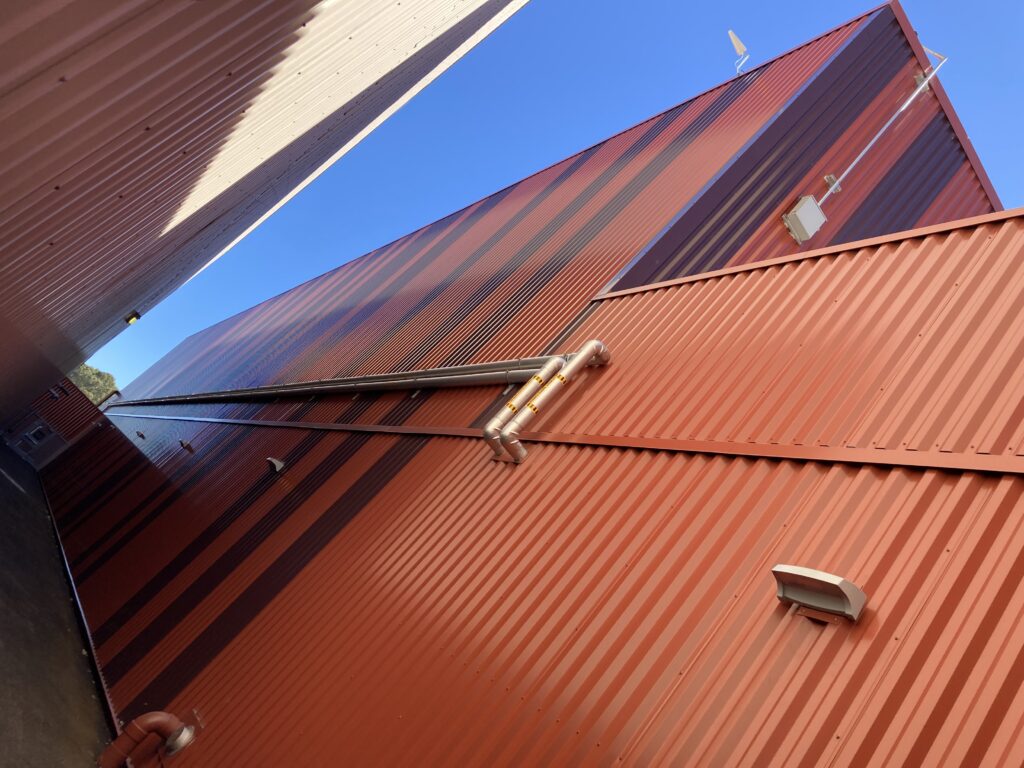
If you’d like to visit the NRLF, there is a reading room open to the public. The stacks are not physically browsable due to how they’re organized, but users can find all items stored at NRLF by virtually browsing UC Library Search. With enough advance notice, materials you need will be prepared and available to use when you arrive. And you will receive a warm welcome, as our tour group did!